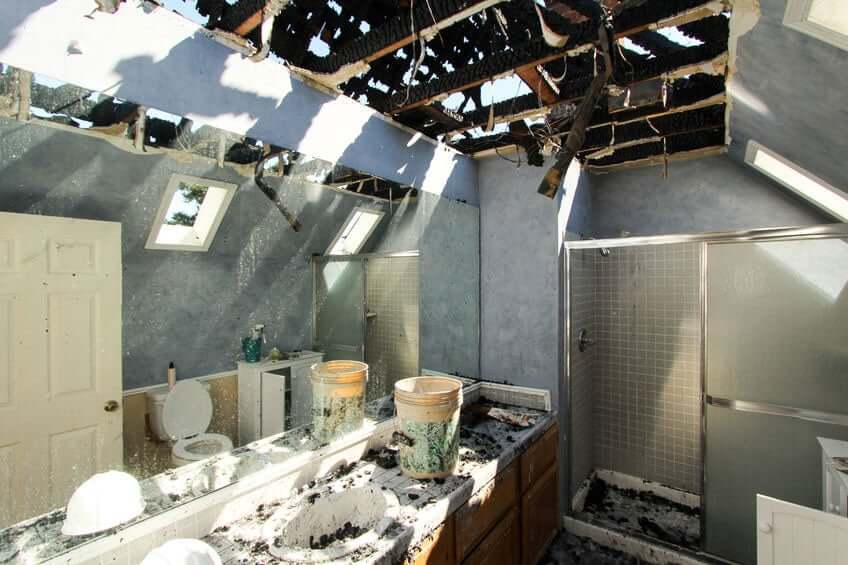
A fire in a hospital can be a devastating event, disrupting critical services and putting patients at risk. Quickly recovering from such an incident is crucial to ensure that the hospital can continue providing essential care. The first step in this process is a thorough assessment of the damage, which helps to determine the extent of the repairs needed and prioritize actions.
Once the damage is assessed, immediate steps must be taken to ensure the safety of patients, staff, and visitors. This includes evacuation if necessary, securing the affected area, and maintaining continuity of care for those who cannot be moved. Hospitals have unique challenges in this regard, given the critical nature of their operations and the need for specialized facilities.
Cleaning and restoring the affected areas are the next critical steps. Hospitals require special attention to cleanliness and hygiene, making this a complex task. Restoration strategies must be both effective and efficient to minimize downtime and disruption. Finally, implementing preventive measures is essential to avoid future incidents. This can involve updating safety protocols, installing advanced fire detection systems, and conducting regular drills.
By following these steps, hospitals can efficiently recover from fires, ensuring safety and a quick return to normal operations.
Assessing Fire Damage in a Hospital Environment
Assessing fire damage in a hospital requires special attention due to the critical nature of the facility. Hospitals house vulnerable patients and sensitive equipment, so thorough evaluation is key. Start by ensuring that the fire is completely extinguished and that the area is safe to enter. Work with local fire authorities to verify safety before beginning the assessment.
Examine the extent of structural damage to walls, ceilings, and floors. Check for damage to fire-rated doors and barriers that are crucial for maintaining safety. Inspect HVAC systems for soot and smoke contamination, as they can spread harmful particles throughout the building.
Also, assess the condition of medical equipment and electronics. These items are often highly sensitive to smoke and heat. Document all damaged items with photographs and detailed descriptions for insurance purposes. Focus on identifying any immediate risks to patient safety and areas that require urgent attention.
Immediate Steps to Ensure Safety and Continuity of Care
After a fire, ensuring the safety of patients and staff is the top priority. Start by relocating patients from the affected areas to safe zones within the hospital or to other facilities if needed. Make sure that lifesaving equipment and medications are quickly accessible in the new locations.
Next, work on restoring essential services. Ensure that emergency power systems like generators are operational to provide electricity for critical medical devices. Check that backup water supplies are available and safe for use.
Secure the damaged area to prevent unauthorized entry. This helps keep both patients and staff safe from potential hazards. Set up clear communication channels to keep all hospital staff informed about the status of different areas and ongoing recovery efforts. Provide updates to patients and their families to alleviate concerns and ensure transparency.
These immediate steps help maintain safety and reduce disruptions, allowing hospital operations to continue as smoothly as possible.
Effective Cleaning and Restoration Strategies
Cleaning and restoring a hospital after a fire involves several important steps to ensure it returns to a safe and functional state. Starting with debris removal, clear out burnt materials and damaged equipment. This includes safely disposing of any biohazardous waste that may have been compromised.
Next, focus on cleaning soot and smoke residues. These can be harmful if left untreated. Use HEPA-filtered vacuums to remove soot particles from surfaces and air ducts. Apply specialized cleaning agents that neutralize smoke odors without leaving harmful residues.
Restore critical areas first, such as operating rooms, ICUs, and patient wards. Ensure that all medical equipment is thoroughly cleaned, sterilized, and tested for functionality. Replace any items that cannot be effectively cleaned or repaired.
Inspect HVAC systems to ensure they are free from smoke contamination. Clean and replace filters as needed. Perform air quality tests to confirm that harmful particles have been removed. Finally, repaint walls and replace flooring where needed to restore the hospital’s appearance and eliminate any remaining smoke odors.
Preventive Measures to Avoid Future Fires
Preventing future fires in a hospital setting is crucial for ensuring patient and staff safety. Start by conducting regular fire risk assessments to identify potential hazards. These assessments should include checking electrical systems, ensuring proper storage of flammable materials, and inspecting kitchen areas for compliance with fire safety standards.
Install and maintain fire detection and suppression systems. This includes smoke alarms, sprinkler systems, and fire extinguishers. Make sure these systems are regularly tested and maintained according to safety regulations.
Train hospital staff on fire safety protocols and emergency evacuation procedures. Conduct regular fire drills to ensure everyone knows how to respond quickly and efficiently in the event of a fire. Establish clear communication channels for reporting fire hazards and ensure that staff know whom to contact in case of an emergency.
Implement strict no-smoking policies and ensure that fire exits are clearly marked and unobstructed. Finally, work with local fire authorities to stay updated on fire safety regulations and procedures.
Conclusion
Fire damage in a hospital environment poses unique challenges that require thorough assessment, immediate safety actions, effective cleaning, and preventive measures. By understanding the specific needs of hospitals, we can ensure that the facility remains safe and functional for both patients and staff.
Addressing fire damage promptly and efficiently is essential to minimize disruptions and maintain a high standard of care. Through careful planning and execution, hospitals can recover from fire incidents and put measures in place to prevent future occurrences.
If your hospital has experienced fire damage and needs professional fire damage restoration services, contact us at Restoration Masters. We are committed to providing comprehensive restoration solutions that ensure your facility is safe and operational. Call us today to schedule an assessment and start the restoration process.





